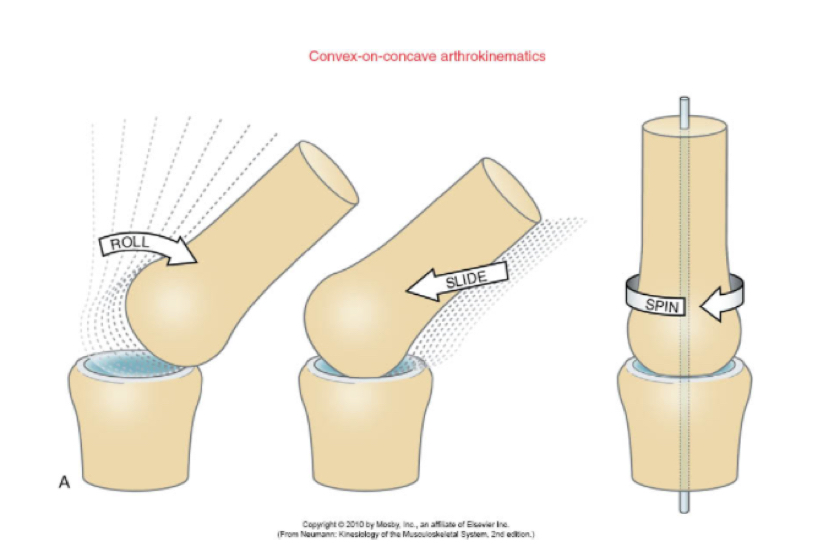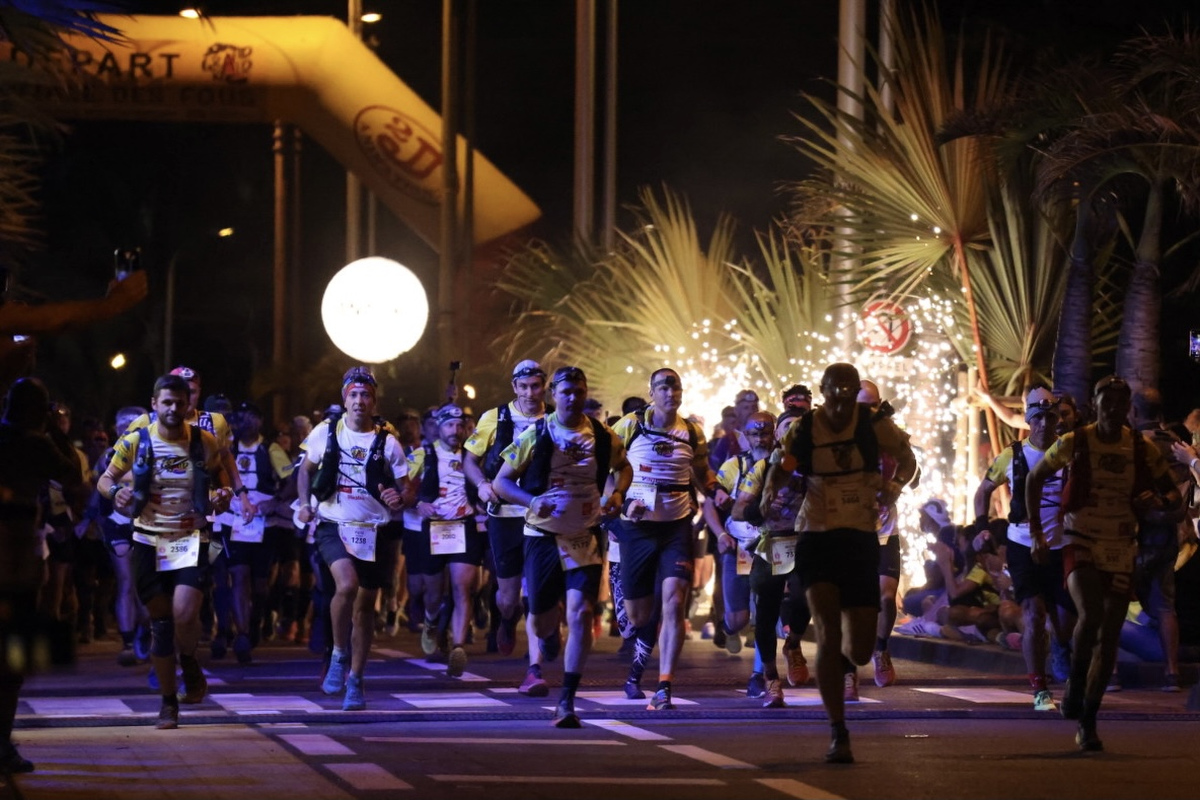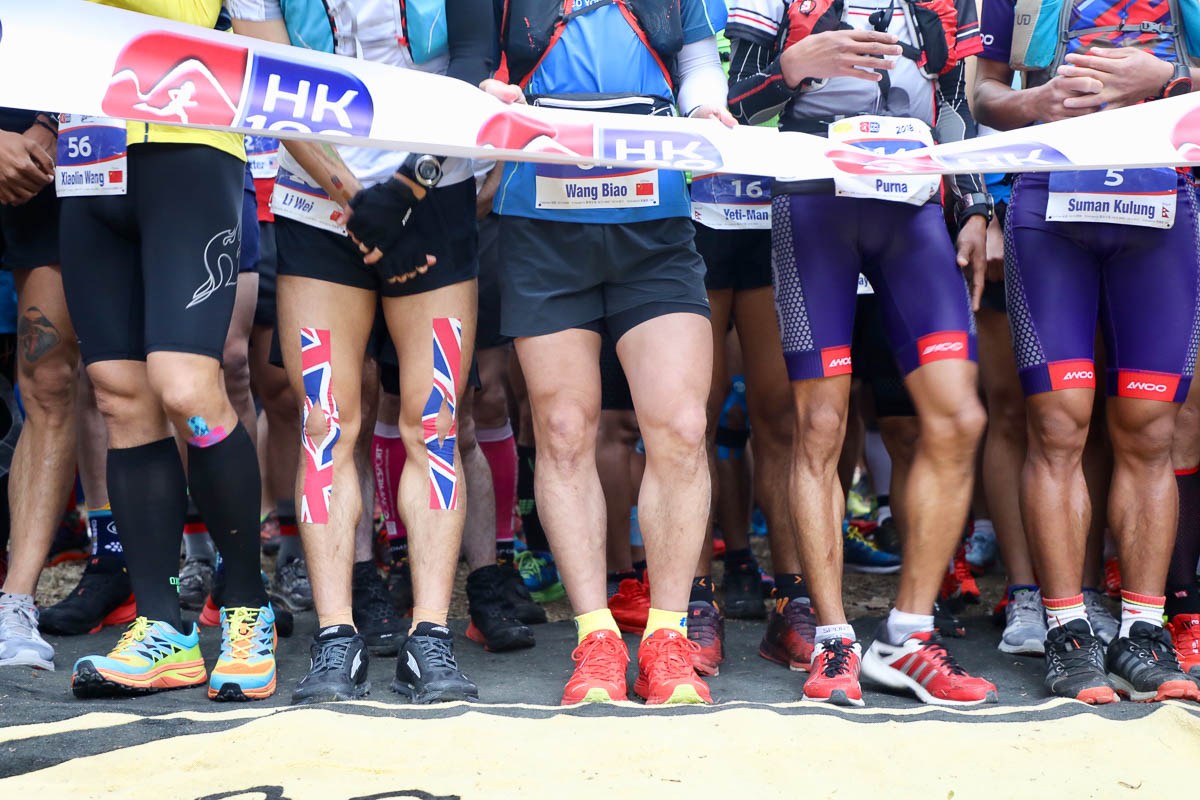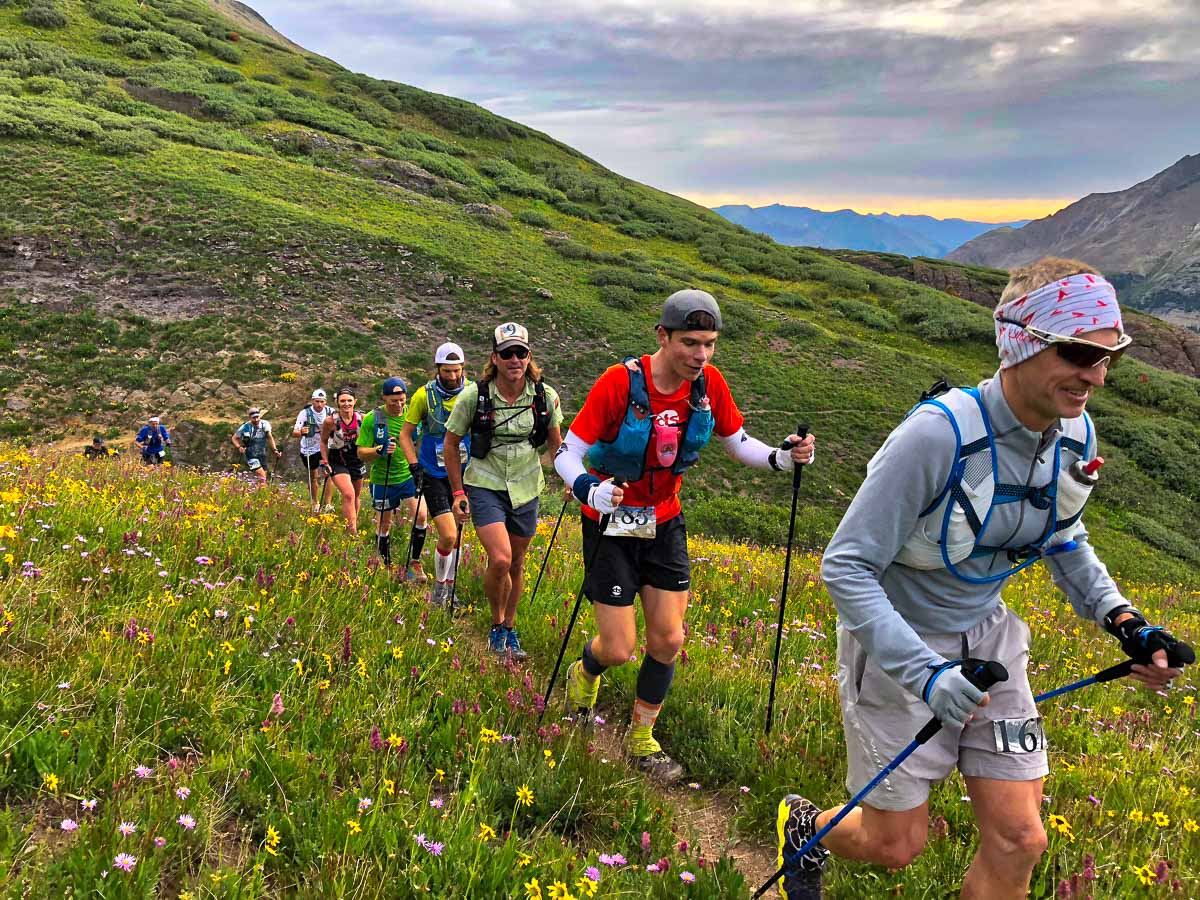 Knee pain is among the peskiest ailments affecting runners. So much so that doomsday naysayers — including many orthopedists — frequently warn against running, claiming that running too much or too far will cause knee arthritis, even though such claims are not supported by research reviews.
Knee pain is among the peskiest ailments affecting runners. So much so that doomsday naysayers — including many orthopedists — frequently warn against running, claiming that running too much or too far will cause knee arthritis, even though such claims are not supported by research reviews.
That said, many runners experience chronic knee pain. And, perhaps more than any other ailment, knee pain causes more runners to hang up their shoes. Yet there are even more lifelong runners who hardly ever experience it. Why, then, is knee pain so stubborn and relentless in some, but seemingly a non-issue in others?
Clinically, I used to struggle in treating knee pain. While my previous experience aligned with the literature, recommending a combination of strengthening, mobility, and stride efficiency to treat and prevent knee pain in runners, there is a cohort of achy, stiff, and stabby knees for which these strategies fail. These folks also get some temporary — but little sustained — relief from other treatment modalities, including massage therapy and acupuncture, or from interventions like braces and tapes.
Indeed, there are also more modern strategies, such as prolotherapy, that seem to help some runners too. And research outcomes on knee surgical interventions are surprisingly poor, even when real pathology, like a meniscus tear, is found with diagnostic imaging.
The A-Ha Moment of Successful Knee Pain Treatment
It only took me a dozen years of clinical practice, plus a few run-ins with knee pain of my own, to recognize the incredible complexity of the knee joint, and why it is prone to stubborn pain.
You ready for it? The knee is half hip and half ankle. That’s it. That’s the wisdom.
Yet it is so true and so impactful that I might consider recommending that the medical community rename the hinge joint between the pelvis and foot, “half hip half ankle.” (But I’m not holding my breath.)
I treat the athletic body in a systems-based, it’s-all-connected approach: recognizing the necessity of treating interconnected regions for sustained pain relief and improved function. Until recently, I still underappreciated the enormous input that dysfunctions from above — at the hip and pelvis — and below — at the ankle and foot — have on the knee.
Treating those dysfunctions has resulted in greater success in reducing knee pain than any knee-only treatment approach. In fact, such an approach has proven to be requisite for full and sustained pain relief and a full return to running.
In this article, we discuss how the hip and ankle so strongly impact the knee, why these factors are especially salient for trail runners and ultrarunners, and specific do-it-yourself strategies to relieve your own knee pain by treating your pelvis and hip, foot and ankle, and the knee itself.
Shears and Torsions: How Accessory Motions Cause Knee Problems
The knee joint is technically a hinge joint: it moves primarily in one plane of motion, the sagittal plane, bending and straightening. It involves the femur bone from above (which connects to the pelvis at the hip joint) and the tibia below (which connects to the foot at the ankle joint).
[Author’s Note: The fibula technically doesn’t articulate with the femur in a classic, cartilage-and-ligament definition. Yet the position and motion of the fibula does impact the knee, particularly the lateral knee. To avoid excess complexity, the fibula is not included in this conversation.]
But what gives us our true athleticism are the small, accessory motions of which the knee is both capable, and must perform, to allow us to do all the amazing running, jumping, cutting, and pivoting. Accessory motions are rolls, spins, and slides that one bony end does upon another.

How two bones move with each other in a joint. Image: Physio-pedia.com/images/7/7a/Arthrokinematics.png
Think of these little motions as required movements to keep one bone situated and moving in the middle of the other, without falling off. This is a concept my fellowship mentor and manual physiotherapy pioneer Gregg Johnson calls on-axis. Conversely, when a bone cannot roll, spin, or slide enough — or does it too much — this causes problems:
- Range of motion loss. This occurs when the end of one bone has translated far enough off-axis that it no can no longer roll and spin in its efficient way to allow full flexion or extension. This is a major paradox that eludes many orthopedic specialists. In essence, too much side-door movement blocks the opening and closing of the front door.
- Instability. If the bony ends are sufficiently off-axis enough, not only can functional mobility be lost, but the joint can also feel unstable. The bony ends are contoured for a snug fit. Too much motion in any direction can impair that fit. This is often the cause of perceived instability or the sensation of giving way of a knee joint with weight-bearing.
- Pain. Knee pain can then occur with off-axis alignment or excessive motion in three ways.
Here are the three ways pain occurs in the knee due to off-axis alignment or excessive motion:
- Poor joint loading. When the bony ends no longer efficiently align, the knee joint cannot bear its normal load without irritation.
- Tissue strain. The soft tissues around the knee, particularly on the medial and lateral sides, become over-stretched. This is the cause of lateral knee or iliotibial band-like pain syndromes. It can also affect any tissues around the patella, or kneecap.
- Patellar pain. When there is excessive accessory knee motion, the kneecap is often the child stuck in a tug of war between disparate motions of the femur above and the tibia below. Such motions often derail the patella from its efficient track, down the groove in the middle of the femur. Stiffness in the gliding and tilting of the patella often results from this femoral and tibial inefficiency.
Here are two types of excessive joint motions that frequently cause pain:
- Shears. Shear occurs when one bone slides in a straight plane relative to another. In the knee, shears occur in side-to-side motions, and can occur in both the femur and tibia with functional flexion and extension joint movements. Very small shear motions are normal in a knee, but when they become too excessive, the shearing motion can cause the joint to get off-axis, and/or over-stretch and strain the tissues around the knee.
- Torsions. Torsion is a rotational movement between the femur and the tibia. Some rotation at the knee is normal and efficient, such as an external rotation at terminal knee extension, called the screw-home mechanism. It then internally rotates, to unlock, with initial flexion. However, too much rotation at the femur and/or tibia causes a torsion strain at the knee joint. This, too, can cause off-axis alignment of the joint, and/or over-strain tissues around the knee and kneecap.
In review, the knee has the freedom and ability to do small accessory motions, but too much motion can cause stiffness and pain.
Causes of Knee Dysfunction
Because the knee is half the hip and half the ankle, the true source of dysfunction is often found at these sites. The femur makes up the hip, above, and knee, below. The tibia makes up the knee, above, and the ankle, below. As such, any inefficiency — stiffness, weakness, or alignment issue — at the hip or ankle may cause knee problems.
So where do hip and ankle problems arise? In trail running and ultrarunning, there are three common issues that may result in knee pain:
Falls
Traumatic input — even mild falls that impact the pelvis and hip — can result in subtle alignment and motion issues in this area, and cause knee problems. The pelvis, as a platform of the femur, is especially susceptible to impact forces. It can change the subtle motions of the pelvis, alter the orientation of the femur, and result in knee pain.
Motion loss at the pelvis can causes this bone to angle inefficiently (often into an anterior tilt), or simply lose the required functional movements, such as flexion and extension, abduction and adduction, and even subtle internal and external rotations.
The same can occur at the hip. Stiffness in the gluteal muscles can cause rotational inefficiency at the femur, translating into the knee.
Ankle Sprains
As with falls, even mild rolls or tweaks of the ankle can result in sustained range-of-motion loss and malalignment of the tibia bone within the ankle. This, too, results in inefficiencies upstream at the knee.
Most notably, an ankle sprain can impair the efficient motion of the tibia. If the tibia can’t glide efficiently over the talus bone at the ankle, it can get stuck, and instead, excessively rotate. This rotation translates upward to strain the knee.
Gut Mobility Dysfunctions
And if your mind wasn’t fully blown, deficits of gut mobility — the ability, in particular, of the intestines to move freely from the pelvis and lower spinal bones, and the muscles of the hip — can cause alignment and mobility dysfunctions at the hip and pelvis, and greatly affect the knee, downstream.
Self-Treatment Strategies for Holistic Knee Pain Relief
If you’ve made it this far, you are either a patient and intrigued reader, or desperate with knee pain!
A runner’s best bet for comprehensive knee pain treatment is to see a systems-based, manual sports medicine practitioner, one who recognizes the contributions of the hip and pelvis, above, and foot and ankle, below. Because of the great and prolonged energy inputs we runners exact on our bodies, sustained pain relief often requires significant hands-on, manual treatment.
Absent that, here are some other strategies to get you started.
Alignment Self-Assessment
Evaluating one’s own leg alignment from pelvis to foot is a highly advanced skill, especially when looking at subtle movements of the hip, knee, and ankle. But a good starting point may be to simply look at the alignment of the knee. If you see an inward bent knee like the below image, then this is likely a sign of stiffness and inefficiency that are worth addressing.

The inward bend demonstrated in this image is likely a sign of stiffness and inefficiency that should be addressed.
Foot and Ankle Mobility Restoration
Here are some strategies to address deficits in each area. For many runners, the best treatment strategy is to begin at the foot and ankle:
- Soft tissue mobilization. Massage and stretch the plantar foot. Ball-rolling massage is a good starting point. Also fully massage the muscles of the calf, particularly the medial shin. Excessive stiffness here can also cause both shears and torsions, above.
- Belt ankle stretch. Because it is the tibia that is often stuck at the ankle, it requires significant force directed at the tibia bone, itself, to restore efficient motion. You can read more about the belt ankle stretch in this article.
Hip and Pelvis Mobility Restoration
A similar approach can be used to restore motion at the hip and pelvis:
- Soft tissue mobilization. Performing ball and foam roll mobilization around all of the hip and pelvis is a great starting point, particularly if your mobility self-assessment notes functional motion losses in this area.
- Joint mobility. After releasing soft tissue stiffness, direct stretches to move the pelvis and hip are the next step.
- Visceral mobilization. My favorite tool for gut mobilization is this soft ball technique:
Knee Mobility Restoration
Finally! Let’s do something directly to the knee:
- Soft tissue mobilization. The best strategy is to massage the area directly above the patella. This area often gets insidiously stiff when the kneecap is pulled excessively from side to side by torsions and shears. Direct massage using small tools or your thumbs is likely more effective than larger instruments like a foam roller. After that, consider addressing bigger soft tissue groups, like the lateral quadriceps, iliotibial band, and hamstrings with a foam roller or other massage balls.
- Varus realignment swivel stretch. This is a quirky-but-effective technique to help realign a knee, especially one that is prone to valgus, when the knee buckles in. This video demonstrates that stretch.
The Next Step: Stability and Efficiency
This approach is a mobility-first strategy. Restoring alignment and motion must occur first, but then both stability and efficiency must be addressed.
There are many strategies, both basic and advanced, to address knee stability. This exercise incorporates stance stability in the running position and is among my favorites.
How we land and pass over that knee when running must also be addressed. The most common knee inefficiency when running is a knee-in strategy. Here is a comprehensive look at that issue, and strategies to improve efficient knee loading in your running stride.
Conclusion: Don’t Give Up! For Chronic Knee Pain, Treat Your Hips and Ankles!
Knee pain frustrates and befuddles runners and their medical team, alike, because many of us fail to recognize the major contributions from above and below.
Opening your mind to issues in the pelvis and hip, and foot and ankle, will give you the best possible chance to reverse and even eliminate the most stubborn knee pain!
Call for Comments
- If you’ve experienced knee pain while running, what remediated it for you?
- Have you found that mobilizing and strengthening other areas of your legs, like your ankles and hips, help your knees and/or whole body feel better when running?



